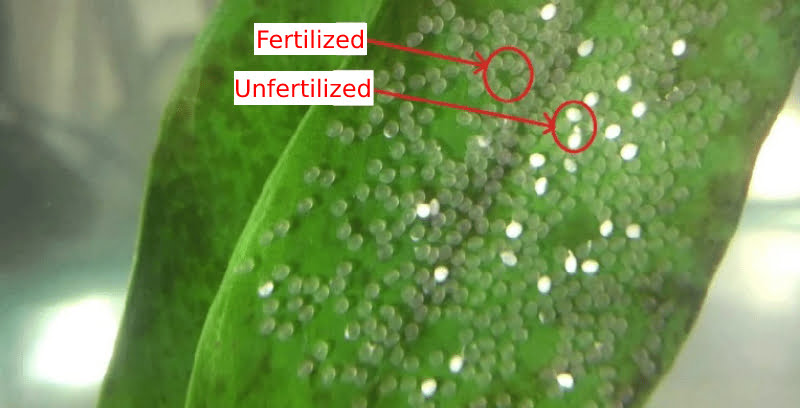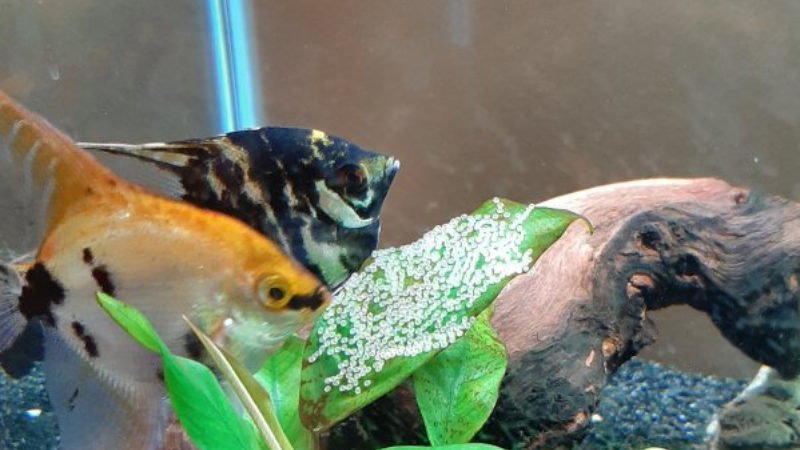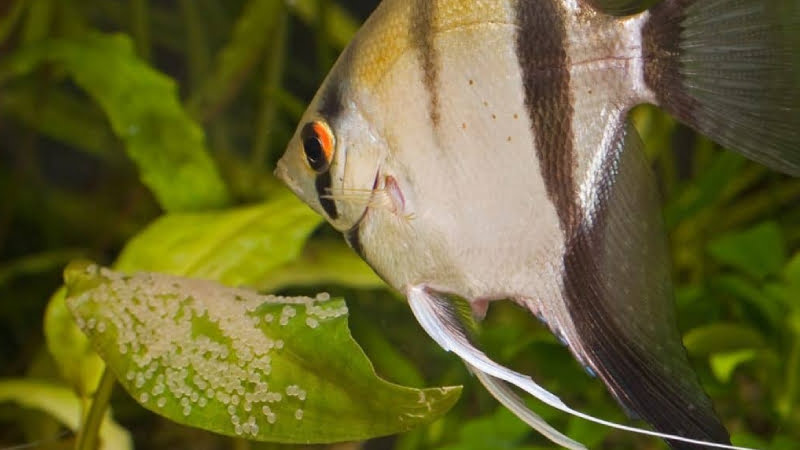You have successfully bred your angelfish and produced spawn. The hard work is not over, and your efforts need to continue. At this point, you must confirm that the angelfish eggs have been fertilized. When they are rot, they should be immediately removed from the tank so as not to infect any other live eggs. Healthy eggs must be watched carefully at all times to ensure that they hatch successfully and remain healthy.
Now, you may wonder “how to tell if angelfish eggs are fertilized”. Keep reading this article to find out the answer.
Related Articles:
- Why Are Angelfish Eggs Turning White? 5 Best Ways To Avoid
- Angelfish Laying Eggs: 6 Important Things You Need To Know
- 10 Notes And Guide On Hatching Angelfish Eggs Artificially
- Will Angelfish Lay Eggs Without Male? How It Affect The Eggs
- Angelfish Eggs Fungus: How To Treat And Prevent Effectively
- All About Angelfish Eggs: Stages, How To Care, How They Look
- Pregnant Angelfish Behavior: Clearest Signs That Indicate Spawning
How To Tell If Angelfish Eggs Are Fertilized?
#1. Fertilized vs. Unfertilized Angelfish Eggs
Angelfish lay hundreds of eggs at once, but not all of them will be fertilized. Consequently, they will rot over time. Those eggs may then infect others in the clutch, resulting in the death of the entire group.
That’s why it’s crucial to distinguish between fertile and infertile eggs. By catching the eggs early on, you will be able to separate the infertile ones from the fertile ones so that you may preserve the rest of the clutches.
The problem is that angelfish eggs are small, which means that it can be difficult to spot any signs of life on them. You can refer to the following table for a few physical indicators that will help you determine which eggs can grow into healthy angelfish and which need to be removed:
| Fertile Eggs | Infertile Eggs | |
|---|---|---|
| Color | Amber, brownish | White or pale colors |
| Transparency | Translucent | Opaque |
| Stickiness | Sticks well to the spawning site | Don’t stick to the spawning site and may fall off |
| Buoyancy | High | Low or lacking |
| Inside contents | Angelfish larvae, yolk sac, oil globule | Empty or not visible |

Unfertilized Angelfish Eggs
You can usually recognize the infertility of angelfish eggs despite their small size at a glance.
- Infertile eggs will be white or have a pale coloration.
- Furthermore, the eggs are opaque, so you cannot see through them. There is no visible evidence of life inside this egg.
- The worst are white eggs that are fuzzy. The eggs definitely have fungus on them, and they are probably dead. This happens quite often with angelfish eggs.
- Unfertilized eggs are also not as sticky as ones that have been fertilized. So, these unfertilized eggs cannot stick to the spawning site and will also fall off their spawning site. They will sink to the bottom of the tank. Usually, even healthy eggs that are trapped in a tank at the bottom will likely die off within a few days since there is no aeration here for them to survive.
Fertilized Angelfish Eggs
You’ll be able to tell if your Angelfish eggs are fertilized by these signs:
- They are amber to brown in color
- They are transparent enough to allow you to see the inside of the egg. It is possible to see oil globules, yolk sacs, and larval angelfish through the eggshell.
- Eggs that are fertilized adhere to the spawning site (which may be leaves, slate, any vertical surface, and sometimes the tank wall) and will remain there until they hatch.
- Fertilized eggs are buoyant, allowing them to float in the water for some time before sinking. The buoyancy in an egg is provided by the oil globule that can only be found in fertilized eggs.
#2. Determine Fertilized Eggs From the Parent’s Behavior

Aside from their physical characteristics, the parents will also display behaviors that indicate whether or not their eggs have been fertilized. They will do things such as:
- The male actually fertilizes the eggs with his genitalia when he fertilizes the eggs.
- During the hatching process, the parents have a strong attachment to the eggs, nipping or skimming over them or fanning them.
- The parents get defensive and fight with other tank mates.
Watching the male fertilize the eggs will obviously give you a fair indication of what is happening. You will usually see this occur shortly after the female has laid the eggs. At first glance, the male may not seem like he is doing anything but swimming over her eggs. However, if you look closely, you will notice that the male’s genitalia is brushing over the eggs. Genitalia appears as a small, tube-shaped attachment that is visible only during fertilization.
Nevertheless, this does not guarantee that all the eggs are viable. Even the most experienced angelfish male may miss a few eggs. Furthermore, if your male is a new parent, he may lack the experience necessary to fertilize the eggs properly.
Parents of angelfish, especially experienced parents, are highly protective of their young. Hence, if you see an Angelfish acting defensive and fighting with its tank mates, the chances are that the eggs have already been fertilized.
Video About Angelfish Laying And Fertilizing Eggs
FAQs
Do angelfish eat their eggs?
There are times when anglerfish, especially inexperienced parents, will eat their eggs. Additionally, stress may also be a cause of your angelfish eating their eggs as well.
But, in most cases, angelfish eat their dead eggs as a means of cleaning because the dead eggs are likely to catch fungus, which will also affect the healthy eggs.
Can angelfish lay eggs/fertilize eggs without a mate?
The angelfish is a species of fish that lays eggs. This means that angelfish are able to lay eggs even if they are not accompanied by a mate. In some cases, female angelfish will still lay eggs even if no male is around to provide sperm.
The only problem is that the egg alone cannot develop into a fry. Because it needs to be fertilized by a male, the egg cannot develop into a fry on its own.
How long does it take for angelfish eggs to hatch?
If your angelfish eggs are laid under the best possible conditions, they will hatch within 60 hours after they’ve been laid.
Nevertheless, the following conditions also contribute to early hatching: Provided the eggs with adequate aeration; with the proper water pH, a temperature of 80° F; The tank water is clean.
Conclusion
By now, I hope you understand how to tell a dead egg from a fertilized one. It is very important to know which eggs are healthy and which will die, so you can guarantee that as many eggs as possible will hatch.

Annette M. Chaney is an experienced marine biologist with over 20 years of experience as an aquarist and fishkeeper. She started her first aquarium at a young age, filling it with frogs and goldfish obtained from the ten-cent pet store.
Annette grew up caring for and breeding African Cichlids, which led to a hobby in high school that doubled as a profitable means. Attending Reed College gave her time to solidify herself as an accomplished aquarium caretaker with an eye for sales. After that, from 2009 – 2013, she studied at Roger Williams University – one of the most prestigious universities for Aquaculture and Aquarium in USA. She is the founder of AquariumCircle since 2010.
